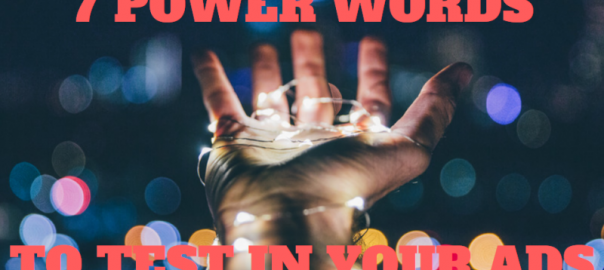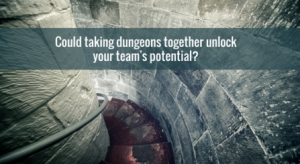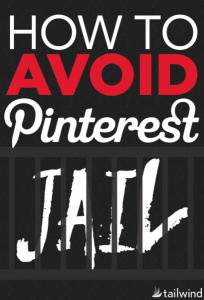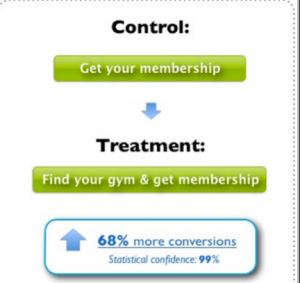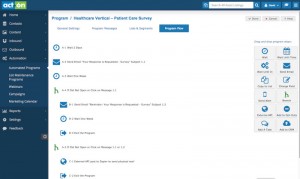Sex.
It always works to get attention.

Power words are so named because they leap off the page (or screen). They arrest attention.
Which is exactly what you need when your ads are competing with people’s families and friends for attention on Facebook.
Here are seven attention-grabbing power phrases to test in your Facebook ads (along with specific examples from Jon Morrow).
1. New
Neuromarketing, by Patrick Renvoise and Christophe Morin, posits that when our customers are faced with 10,000+ sales messages on a daily basis, it’s critical we understand (and leverage) the “triggers” that dictate how people make decisions.
For example, the “new-ish” parts of the brain might focus on rational processing and understanding. But at the end of the day, it’s the old-school, dinosaur part that ultimately makes the call of what we do and why.

This is the part of the brain that tells you to find food quickly before passing out, or RUN! when it sounds like something’s coming up behind you.
And it’s this lizard-brain mentality that responds best to power words that cut the BS to drive straight to the heart of the matter.
When faced with limitless options, choices, and alternatives, one category that always stands out is new. State-of-the-art.
It’s not just the specific word that works, though, but also the synonyms that conjure the same never-seen-before intrigue.
For example, Buffer’s analysis of the most persuasive words in the English language also highlighted:
- Suddenly
- Now
- Announcing
- Introducing
Here’s a perfect example from SumoMe:

They double down on newness in the headline (“Introducing” and “Newest”).
And then they use that fantastic image that reinforces the message, instantly (in under 13 milliseconds) communicating everything someone needs to know.
There’s a huge performance jump in September of that year (compared with month’s prior).
Why? What caused that?
It illustrates (and suggests) that something new was responsible. Something unexpected. Something you don’t currently know about yet. But one that you’re being introduced to shortly.
2. Threats
Accentuate the positive. Just like Baloo says.
‘Cept when it comes to advertising.
Because rolling out the same “save time” or “save money” lazy-ass messaging only helps your message get lost in the sea of sameness.
Instead, go negative. Outbrain found that negative headlines performed 50% better than positive ones, receiving 69% higher click-through rates on average, too.

So emphasize external threats that people should protect themselves from. Hint at internal mistakes that people are already making to sabotage their results.
For example, remember that whole “mobilegeddon” hysteria?
Over-hyped? Sure.
But there’s still a kernel of truth behind the message. Mobile internet traffic HAS overtaken desktop and if your site isn’t optimized properly, you risk losing out on traffic (and conversions).
Key word there: “Losing.”

You know what else a bad mobile website does for a business?
Look no further than Jon Morrow’s first subhead, “Calling All Fearmongers,” and take your pick:
- Apocalypse
- Collapse
- Hazardous
- Backlash
- Bumbling
- Catastrophe
- Disastrous
- Embarrass
3. Curiosity
It’s tempting to dismiss things we don’t agree with.
But what about the Kardashians? SnapChat? Kombucha? How do you explain our interest?
The online equivalent could be pageview-hustling sites like Upworthy and BuzzFeed. They rely on outlandish, over-the-top, hyperbolic language to do whatever it takes to get you to look.
It turns out there’s some method to the obnoxious madness. Because Upworthy nets 152% more Facebook likes. Pretty much more than everyone else combined.

Their secret weapon?
The age-old curiosity gap that uses intrigue to get unsuspecting readers to click before they realize what they’re even doing.

Copyhackers used it to devastating effect, generating a 927% increase in clicks.
While BuzzFeed does it by using a cliffhanger headline that hints at an issue but pulls back before explaining it.
For example, this story showcases their amazing headline judo skillz:

It cleverly hints at common problems and mistakes without actually ever mentioning those words explicitly. Instead they often start headlines with “This…” or “These…” or “Things…” to create curiosity and draw you in.
Two-more favorite examples of un-ignorable headlines that rely on lascivious language to create curiosity include:
- How to Advertise on a Porn Website
- Copyblogger Editor Admits to Sleeping with Readers and Recommends You Do the Same
These suspicious yet totally safe-for-work articles use misdirection and evocative words (“Porn” and “Sleeping with”) to get you to click.
Other PG-rated, curiosity-inducing words that you can employ on the daily include:
- Secrets
- Behind the Scenes
- Confidential
4. Shortcuts
Don Draper lived the dream.
Maybe not after 5pm. But certainly from 9-5pm. We’d kill for his lifestyle. Sitting, sleeping, brooding or boozing for hours in between those one or two things that needed to get done each day.
Advertisers today dream of that turtle-pace and looooooong turnaround times of the Golden 60s.
After all, working in media today is one of the most stressful jobs, after flying planes and performing surgery on people!
Turns out, there’s some evolutionary, old-brain stuff happening here too. It’s like a disease. A sickness that’s hardwired into us.
Here’s a terrible graphic from an excellent Forbes article that articulates the problem:

What that vague blob up top means is that essentially people can be grouped into three buckets that explain their drive for accomplishment and attitudes toward leisure:
- Apathetic (no one reading this blog)
- Family-oriented (laudable and important)
- Go-getters (95% of you reading this)
Cue: stress. We’re trying to stuff more results and more clients and more campaigns into less waking hours.
The antidote? Our salvation?
- Hacks
- Tricks
- Shortcuts
- Cheat sheets
- Checklists (like in the below Facebook ad)

Many times you can even get the answers directly from your customers themselves.
Recently, AdEspresso ran an “empathic survey” to see what words people associated with their brands.
Despite not using a word bank that might prompt or bias certain answers, the same results kept popping up again and again:

The winners included “efficiency,” “functionality,” and “easiness.”
That’s a clue for which category of power words might work best with our audience.
5. Authority
Social proof works like herd mentality: people following others just because.
It’s said that we do business with those we “know, like, and trust.” Social proof is the illustration of that. If peers or brands or celebrities we admire say so, we’ll agree.
Online, social proof plays out most directly in the form of reviews which can influence three-fourths of people. 92% of us will trust recommendations from other people – even if we don’t know them personally!
Interestingly, one of the best authoritative power phrases isn’t even a word per se, but numbers. That’s because using numbers in news stories is proven to increase credibility.
SumoMe doesn’t just use this technique once or twice, but Thrice (who apparently still makes music):

- “100% FREE”
- “178,222 websites”
- “37 seconds”
These three examples, in one single Facebook ad, go beyond simply mentioning “guarantees,” “research,” and “reports” (just to name a few from SumoMe’s massive list).
They visually illustrate it to bolster credibility and build authority in their offer.
Another spin on this technique is to borrow credibility from others by piggybacking on their celebrity; using household names to illustrate the points you’re trying to make. Example: 21 Facebook Ad Secrets Revealed by SumoMe, HubSpot, and Marketo.
If you have a positive impression of those brands, you’ll undoubtedly like the information within, too.
6. Anger
Beqa Latsabidze, a 22-year-old, unemployed student from Georgia, set up a website in the middle of 2016.
It was devoted to posting “gushing stories” about Hillary Clinton before last year’s infamous election, with the hope of generating visits and AdSense dollars.
“I don’t know why, but it did not work,” he later told The New York Times.
Instead of beating his head against the proverbial wall forever though, he switched gears.
Beqa started posting anti-Hillary messages. Some true. Mostly false. And thousands of dollars began to pour in. The New York Times sums up the success:
“If his pro-Clinton site had taken off, Beqa said, he would have pressed on with that, but ‘people did not engage,’ so he focused on serving pro-Trump supporters instead. They, he quickly realized, were a far more receptive audience ‘because they are angry’ and eager to read outrageous tales.”
Another scrappy internet entrepreneur, Vancouver-based John Egan, was saw similar results with his own site.
The catalyst for this sudden, massive upturn in fortunes? Again, directly from the Times:
“He, too, discovered that writing about Mr. Trump was a ‘gold mine.’ ‘It’s all Trump,’ Mr. Egan said by telephone. ‘People go nuts for it.’
Like it or not, doesn’t really matter. The point is to identify – and tap into – sensitive topics that already move people to care (one way or the other).
Once again, Jon Morrow has a complete list to choose from under the “Start a Riot” subhead. Here’s a few practical ones that can work in nearly any situation:
- Abuse
- Evil
- Force-fed
- Hate
- Lies
- Sick and Tired

See how the above ad uses the word “hate” to tap into the anger most bridesmaids-to-be feel about their dresses?
7. Greed
Los Angeles. Mid-1980s. Gary Halbert began publishing The Gary Halbert Letter that would be sent to subscribers in over 50 different countries paying hundreds to thousands of dollars.
Today you can read most of those letters online, for free. Because he’s dead. I guess.
(I mean, he really is dead. I’m just not sure why you can read them for free now.)
One of those letters focuses on AIDA: the classic copywriting formula that says you gotta grab Attention, get Interest, and build Desire inside each prospect before the subsequent Action (or purchase).
Arguably the toughest part is desire. Getting someone to want something so badly that they’re motivated to get off their behinds and blow through the brick wall known as inertia.
So. How?
Here’s what Gary instructs:
“Once a prospect is interested in what you are talking about it is time to get his greed glands going and make him really desire the product or service.”
Greed glands manifest in two ways:
- Saving a $ h!t-ton of money
- Making a $ h!t-ton of money
Some are motivated by one. Others, the other.
“Bargains” and “discounts” and “the 99%” apply to the former group, like in this ad:

“Fortunes” and “doubling” and “six-figure,” the latter:

It only matters that you match the right message to the right audience at the right time.
Conclusion
Today’s advertising battle starts with attention.
And on Facebook, you’re competing against people’s loved ones.
Which means the stakes are high. Average and bland and good aren’t good enough.
Instead, inject power words and phrases into your Facebook ads to arrest attention and get people to click.
Digital & Social Articles on Business 2 Community(55)
